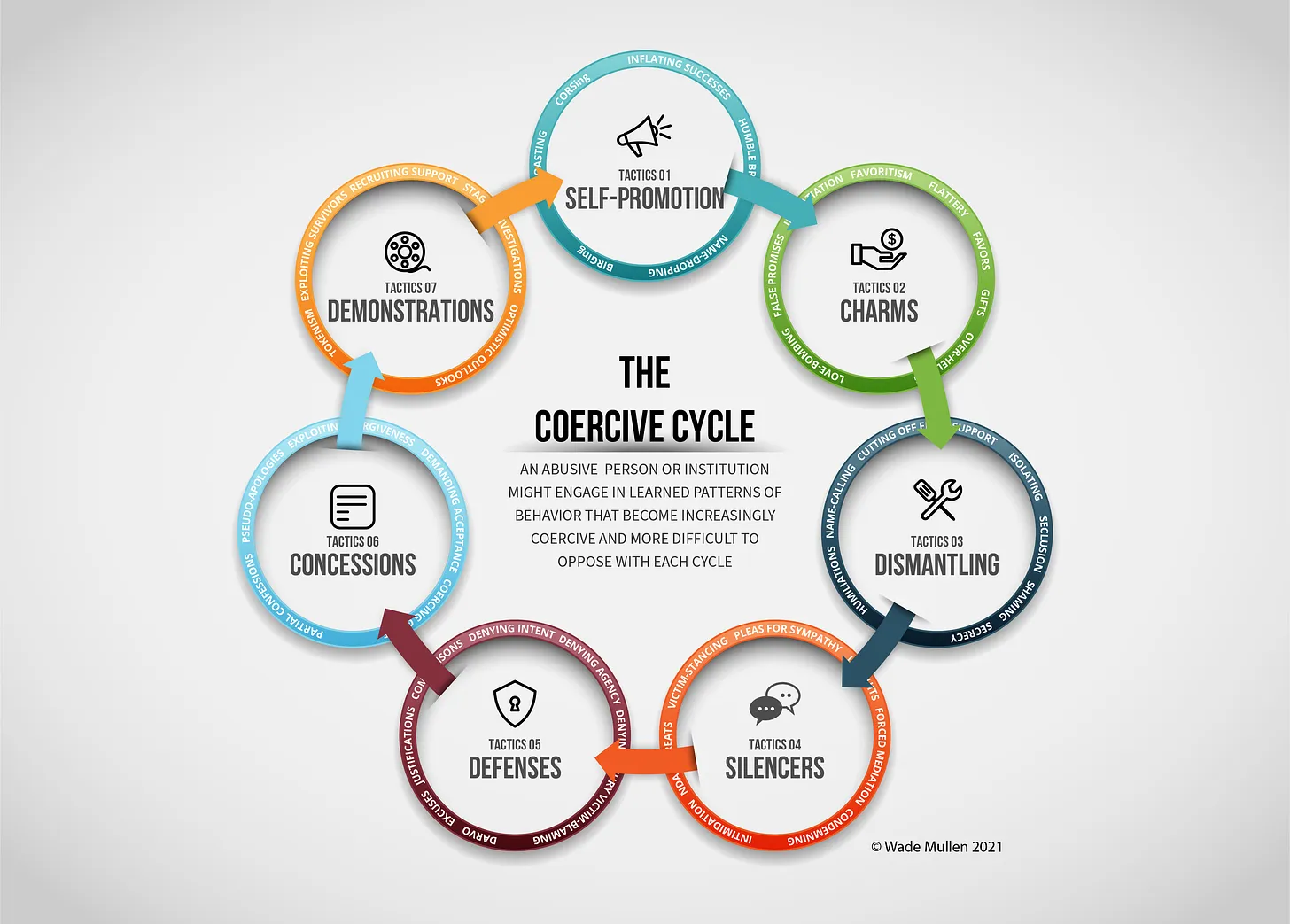
The Coercive Cycle by Wade Mullen. Used by permission
Study the diagram. The large words inside each circle name a set of tactics. The white words written on the colored rings name the specific tactics. If you cannot expand your screen to read the words on the rings, they are written out here: Words on Rings
Have you observed or personally experienced any of these in a church or Christian organization? (Note: use of various tactics may not come in order. They may vary per situation. It’s the pattern of use that should grab our attention.)
“Coercion in abusive situations promotes confusion for the sake of control.” The confusion generated is effective in keeping not only victims confused, but also congregants, and even other leaders. When people are confused, they tend to default to the safest position: “Since I already trust the leader, and I’m confused, I’ll believe him.” The benefit of this position is that there is no short term risk. It’s the best bet to maintain one’s own sense of equilibrium. But to default to that “safe” 0ption is to ignore the many commands in Scripture to beware. Understanding the tactics summarized in this diagram can trigger one’s early warning systems, raising red flags.
The confusion generated by an abuser often results in the targets of that abuse feeling like they are crazy. That’s a deliberate strategy of control. Being able to name and recognize the tactics being used against you helps a victim keep a stronger grasp on reality.
These tactics are not directed only at victims. Self-promotion and charms, for example, are often directed at the community as a whole. Individuals may feel special and part of an “in group” as they identify with the glorification of their church or organization. The various “charms” are likely to be used liberally to target influential individuals who will feel even more special and gain prestige from being in the inner circle. The abusive person will be able to count on the loyalty of these insiders if he is ever exposed and needs people to protect and defend him. It’s why people so often say in response to an accusation of abuse of power, “Well, he’s never done that to me, so the victim must be misinterpreting things, or emotionally unstable, or lying.”
Read more about the meaning of each circle of tactics on Wade Mullen’s Substack: “The Coercive Cycle” at Pellucid